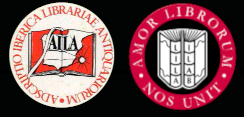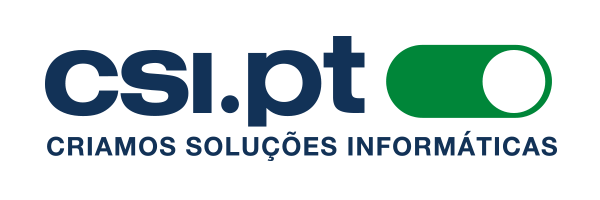


Home |
Temáticas |
Catálogos |
Pedidos |
  |  |
|||||||
|

|
RUGENDAS. (Johann Moritz) HABITANTE DE GOYAS, QUADRO A ÓLEO PINTADO SOBRE MADEIRA. |
|
|
Clique nas imagens para aumentar. LEÃO X. (Papa) Bulla absolutionis Concilii Lateranen[sis] cum decreto expeditionis in Turchos generalis: ac imposition[is] Decimar[um] per trienniu[m]:lecta in duodecima et ultima sessione p[er] R. P. Patriarcham Aquilegien[sem]. S/l. S./I. [Roma, M. Silver, depois de 17 de Abril de 1516. Secretários] Bembus e F. de Vega. In 8º de 20x13,5 cm. com [iv], fólios. Ilustrado com o brasão do papa Leão X, um Médicis. Exemplar com alguns defeitos e restauros marginais afetando um pouco a mancha tipográfica na última folha. O Quinto Concílio de Latrão [1511-16], convocado pelo papa Júlio II [1503-13], foi o mais extenso dos concílios ecumênicos medievais. O pontificado de Leão X [1513-1521] ficou especialmente marcado pela cisão protestante, iniciada por Martinho Lutero em 1517. A presente Bula visava restabelecer a paz nos reinos católicos da europa, ficando o papa com a decisão final sobre os conflitos, criando também um imposto de um dízimo por três anos, permitindo assim concentrar os esforços militares numa cruzada contra o poderoso sultão otomano Selim I, que ameaçava preocupantemente com o seu exército as fronteiras europeias, tendo mesmo conquistando a Hungria. Inglaterra, Espanha e Portugal deviam fornecer uma armada e forças militares para conquistar Constantinopla. A décima segunda sessão e última do Quinto Concílio de Latrão, realizada a 16 de Março de 1517, foi presidida por Leão X. “Estavam presentes 18 cardeais, três patriarcas latinos, cerca de 80 arcebispos e bispos, os habituais funcionários da Cúria, e os embaixadores residentes em Roma… Marino Grimani, o novo patriarca de Aquileia, leu a bula Constituti justa verbum prophetae [aqui impressa], que reviu o trabalho do concílio, que o papa Júlio II tinha convocado, e das quais apenas realizou as primeiras cinco sessões; o papa Leão X continuou o seu trabalho através das sessões restantes. O cisma Galicano tinha sido encerrado, as perspetivas de paz na europa pareciam boas, e preparavam-se os planos para a reforma da Cúria Romana. Mas um dos principais objetivos do concílio dizia-se, tinha sido o de lançar uma cruzada contra os turcos. Desde a queda de Constantinopla no tempo de Nicolau V, os antecessores de Leão X tinham planeado uma expedição para vingar a derrota então infligida à fé católica e para reprimir a fúria dos infiéis. Agora por sua vez, Leão X cria um imposto de um dízimo por três anos a ser cobrado para a cruzada em todo o Universo Orbe (mundo católico), a ser pago pelas igrejas, mosteiros e titulares de benefícios eclesiásticos. A bula termina com uma advertência para os príncipes da Europa manterem a paz, dispensando Leão X os patriarcas presentes para regressarem às suas igrejas” In (Setton, The papacy and the Levant (1204–1571), vol. III pp. 169–70).
One of two editions of this papal bula. The other, printed by Etienne Guillery, is dated 28 July 1517. The Fifth Lateran Council [1511-16], summoned by Pope Julius II [1503-13], was the most extensive of medieval ecumenical councils. The pontificate of Leo X [1513-1521] was especially marked by the Protestant split, begun by Martin Luther in 1517. This Bula aimed at establishing peace in the Catholic kingdoms of Europe, leaving the pope with the final decision on the conflict and also creating a tithe for three years, allowing to concentrate military efforts on a crusade against the powerful Ottoman Sultan Selim I, who threatened worryingly with his army the European borders, even conquering Hungary. England, Spain and Portugal should provide a fleet and military forces to conquer Constantinople. The twelfth and last session of the Fifth Lateran Council, 16 March 1517, was presided over by Leo X. ‘There were eighteen cardinals present, three Latin patriarchs, some eighty archbishops and bishops, the usual curial officials, and the ambassadors resident in Rome. Marino Grimani, the new patriarch of Aquileia, read the bull Constituti juxta verbum prophetae [printed here], which reviewed the work of the council. Julius II had convoked it and held five sessions; Leo had continued its work through the remaining sessions. The Gallican schism had been sealed, the prospects for peace looked good; and plans were being made for the reform of the Curia. But one of the prime objects of the council, it was said, had been to launch a crusade against the Turks. Since the fall of Constantinople in the time of Nicholas V, Leo’s predecessors had planned an expedition to avenge the injury then inflicted upon the faith and to repress the fury of the infidels. Now Leo in his turn imposed a three years’ tithe to be levied for the crusade in Universo Orbe. It was to be paid by churches, monasteries, and holders of ecclesiastical benefices. With a final admonition to the princes of Europe to keep the peace, Leo dismissed the attending fathers to return to their churches’ (Setton, The papacy and the Levant (1204–1571), vol. III pp. 169–70). Göllner 83. OCLC records one copy only (Bayerische Staatsbibliothek). Bookseller Inventory # I680 Referência: 1211CS046
Indisponível Caixa de sugestões A sua opinião é importante para nós. Se encontrou um preço incorrecto, um erro ou um problema técnico nesta página, por favor avise-nos. 
|
Pesquisa Simples




|
||
 |
|||
|